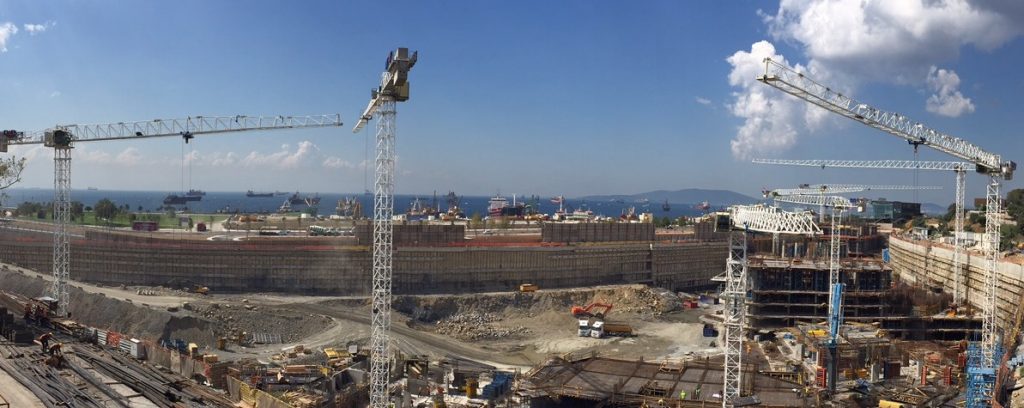Overlooking the waters of the Marmara Sea, a mixed use project intended to drive economic growth in the area is taking shape. The enclave of branded hotels, restaurants, shops and 1,463 luxurious homes is developed and constructed by Turkey’s indigenous Dap Yapi Construction – the name behind Centro Futura, Adam Kule Tower, and Taksim Petek Residence – with handover scheduled to begin from December 2016.
Constructing the five sea facing towers – each over 150 metres tall – are Raimondi’s MRT 144, MRT 111 and SRT 85 models, with lifting capacity of 10, eight and six tonnes respectively.
Standing tall over the marina, the flat top models can advantageously erect and operate in close proximity with each other, solving most of the on-site difficulties faced by the contractors due to space limitations. According to the crane manufacturer, this was key to landing a deal with Dap Yapi Construction.
A common advantage cited by Eng. Domenico Ciano, technical director at Raimondi Cranes, is the ease of assembly and shorter installation time when compared to a traditional cat-head crane.
Commenting on the minimum overlap jib clearance required, he explains: “Traditional cranes have the cusp and tie rods extruding above the jib, whilst the flat top have the cusp within the jib parameters.”
Placing cranes in close proximity may raise some safety issues. However, with Ascorel as their anti-collision partner, Ciano ensures Raimondi takes all the necessary safety measures and precautions.
Ciano says: “To ensure extra safety measures, all of the flat top cranes are equipped with anti-collision systems which includes sensors, control units, and radio units. The systems are installed on all of the cranes to avoid collision due to potential operator error.”
With extensive global experience, the Milan-based crane manufacturer has a record of manufacturing and distributing over 15,000 cranes worldwide.

